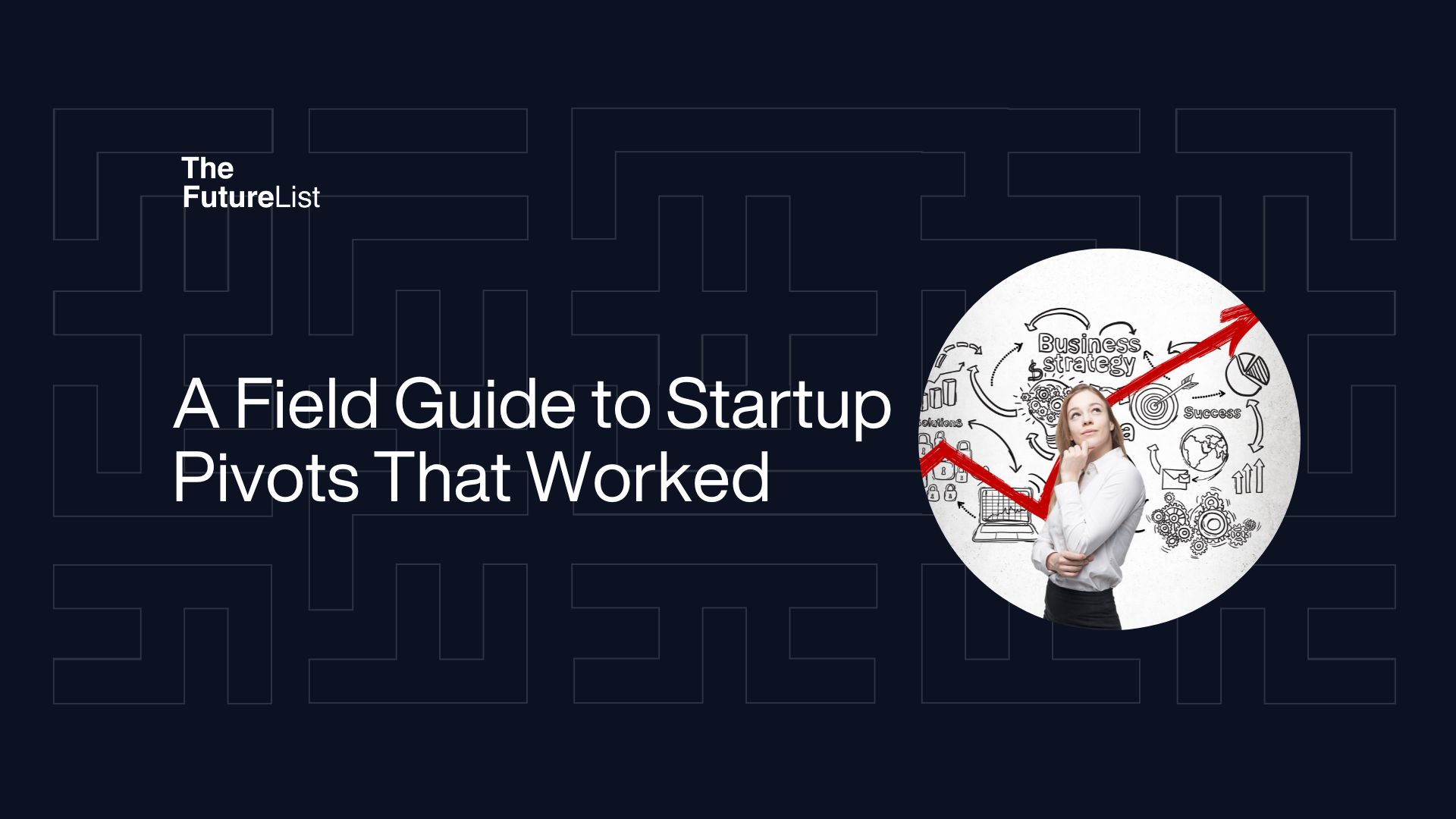
A Field Guide to Startup Pivots That Worked
By David Armaah
In startup mythology, there’s a lot of love for the bold idea, the lightning-in-a-bottle product, the genius founder. But the reality of innovation is messier — more trial-and-error than triumph. Often, the companies that succeed aren’t the ones that got it “right” from day one. They’re the ones that moved quickly, admitted what wasn’t working, and changed course before it was too late.
Here are three recent stories of startups that broke their own models — and came out stronger.
- 👕 Virgio — From Fast Fashion to Circular Fashion
Original idea: A Gen Z-focused fast-fashion e-commerce marketplace.
Founded: Early 2022
Pivoted: October 2023, after a $37 M Series A
Virgio launched with the mission of delivering rapid-turnaround fashion targeting millennials and Gen Z. However, with fewer than 30,000 daily users and limited traction, the team—backed by a $160 M valuation—decided to shut down the original platform and completely shift focus. They returned some capital and relaunched as a circular fashion brand emphasizing sustainability: upcycled materials, natural fabrics, and PETA-certified vegan products.
Why it worked:
Rather than treading water in a crowded fast-fashion sea, Virgio redefined its core mission. The pivot aligned with global consumer values—responsibility and sustainability—creating a clearer brand identity and deeper emotional resonance.
What we learn:
Even after a major investment, it’s smarter to start over with integrity than to soldier on. When consumer values evolve, realign your mission, not just your product.
2. ✍️ Jasper AI — From Conversion Optimization to AI Writing Platform
Original idea (as “Proof”): A website personalization and conversion tool.
Founded: 2014
Pivoted: January 2021
For years, Jasper’s founders built conversion tools under the name “Proof”—but growth stalled at $250K MRR with 3% monthly growth. Then came GPT‑3. In early 2021, they launched Jasper AI—an AI-powered writing assistant for marketers, copywriters, and teams. Within 30 days, this new AI-native SaaS hit strong product–market fit, grew to $45M ARR, and later raised $125M.
Why it worked:
They pivoted into AI-native SaaS at the perfect moment, solving a real pain point (ad copy, blog content) with a sleek, easy-to-use tool. They leveraged GPT‑3 effectively and leaned on their existing network to drive early adoption.
What we learn:
Pivots don’t have to be massive. By combining rising tech (GPT‑3) with your existing infrastructure and domain expertise, you can ignite growth quickly and meaningfully.
3. 🏡 Airbnb — From Inflatable Mattresses to a Global Hospitality
Original idea: A quirky air mattress rental service during conferences.
Launched: 2008
Pivot: Realized it wasn’t just about affordable lodging – it was about belonging anywhere. Expanded listings to homes, apartments, boutique experiences, and later, luxury stays.
Why it worked:
Instead of sticking to short-term quirks, Airbnb redefined the very meaning of travel hospitality. It leveraged trust, community, and user reviews to create a new kind of tourism economy — one that didn’t rely on hotels.
What we learn:
The best pivots happen when companies zoom out from their product to focus on what the user truly values — in Airbnb’s case, authentic and local travel experiences.
🔄 The Pivot Mindset: Not Just a Reaction, But a Strategy
Pivots are often framed as a last resort, but for the smartest founders, they’re a calculated leap. What sets apart companies like Virgio, Jasper AI, and Airbnb isn’t just their ability to shift, it’s how strategically and sensitively they did it.
- Virgio didn’t just change products, it realigned with cultural values and doubled down on purpose.
- Jasper AI combined emerging technology with existing capabilities to solve a clearer, more urgent problem.
- Airbnb expanded from a niche hack to a global movement because it focused on what users truly cared about.
Whether it’s about timing, mission alignment, or user insight, these pivots remind us:
Real innovation lives not in the idea, but in the willingness to evolve it.
Get innovation insights from The FutureList weekly. Subscribe to our newsletter here
Categories
- Agritech
- Artificial Intelligence
- Biotech
- Blockchain
- Climate Tech
- Data Infrastructure
- Edtech
- Events
- Fashion
- Fintech
- Healthtech
- Infrastructure
- Innovation Memos
- Innovation Scout Program
- Insight
- Insurtech
- Machine Learning
- Martech
- Mobility
- Music and Media
- Partner Offers
- Perks
- Procurement
- Proptech
- Retailtech
- Ridehailing
- Ridesharing
- Robotics
- Space Aviation
- Supply Chain
- Talent
- Telecoms
- Uncategorized
- Venture Capital
- Wastetech
- Women In Tech